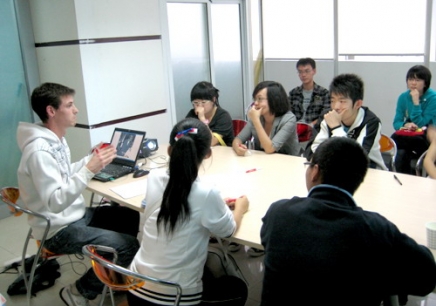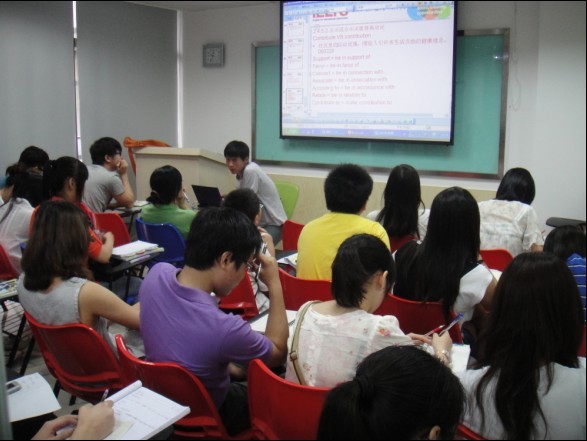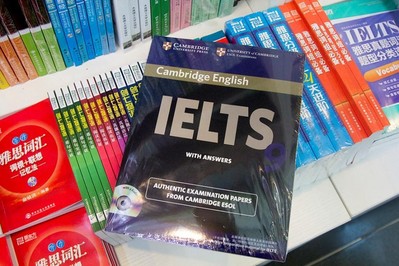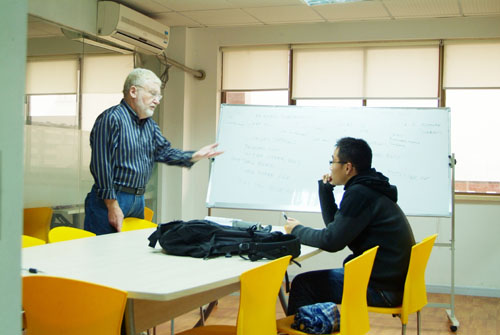 返回
教育头条
返回
教育头条

如何通过雅思阅读题型判断答案位置 ,雅思阅读
雅思阅读如何通过题型判断答案位置,讲到阅读部分有三篇文章,按照顺序和文体划分为说明文(description)或者报告(report),夹叙夹议(discursive)和议论文(discussion).
往往每一种类型的文章所出的问题往往是特定的,例如一、篇说明文只会考察事实信息那么就会出diagram/summary/sentence/completion,shortanswerquestions,label the diagram.这些题目只是名称不一样而已,你们有没有发现他们共同之处?
没错!这些题都需要你从文章中找到原词去填!按照指南的说法就是‘youshould not change the words form or jointhem together’, ‘any spellingmistakes will be marked wrong’.
以上题目(labelthe diagram除外),一定是题文同序的(the answerswill come in order).也就说从文章一、段开始根据题干的关键词找答案,通常在阅读中的关键词是指名词和动词,那么我们来看一个例子,在左侧你可以找到一条清晰的时间线:Biblicaltimes, ancient Rome, Middle Ages,你只需要在原文中找到以上三组词并且圈出来这道题的答案也就清晰了,那么我们一起来找一下答案。
Bringingcinnamon to Europe
Cinnamon is a sweet, fragrant spice produced from theinner bark of trees of the genus Cinnamomum, which is native to the Indiansub-continent. It was known inbiblical times, and is mentioned in several books of the Bible, both asan ingredient that was mixed with oils for anointing people's bodies, and alsoas a token indicating friendship among lovers and friends. In ancient Rome, mournersattending funerals burnt cinnamon to create a pleasant scent. Most often,however,
the spice found its primary use as an additive to food and drink. In the Middle Ages, Europeans whocould afford the spice used it to flavour food, particularly meat, and toimpress those around them with their ability to purchase an expensive condimentfrom the 'exotic' East. At a banquet, a host would offer guests a plate withvarious spices piled upon it as a sign of the wealth at his or her disposal.Cinnamon was also reported to have health benefits, and was thought to curevarious ailments, such as indigestion.
Toward the end ofthe Middle Ages, the European middle classes began to desire thelifestyle of the elite, including their consumption of spices. This led to agrowth in demand for cinnamon and other spices. At that time, cinnamon wastransported by Arab merchants, who closely guarded the secret of the source ofthe spice from potential rivals. They took it from India, where it was grown,on camels via an overland route to the Mediterranean. Their journey ended whenthey reached Alexandria. European traders sailed there to purchase their supplyof cinnamon, then brought it back to Venice. The spice then travelled from thatgreat trading city to markets all around Europe. Because the overland traderoute allowed for only small quantities of the spice to reach Europe,
andbecause Venice had a virtual monopoly of the trade, the Venetians could set theprice of cinnamon exorbitantly high. These prices, coupled with the increasingdemand, spurred the search for new routes to Asia by Europeans eager to takepart in the spice trade.Seeking the highprofits promised by the cinnamon market, Portuguese traders arrived on theisland of Ceylon in the Indian Ocean toward the end of the 15th century. Before Europeans arrived on the island,the state had organized the cultivation of cinnamon. People belonging to theethnic group called the Salagama would peel the bark off young shoots of thecinnamon plant in the rainy season, when the wet bark was more pliable. Duringthe peeling process,
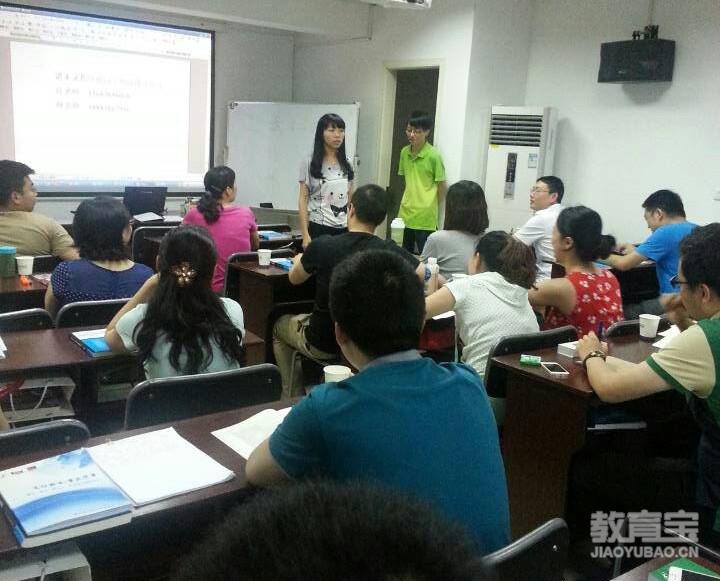
they curled the bark into the 'stick' shape stillassociated with the spice today. The Salagama then gave the finished product tothe king as a form of tribute. When the Portuguese arrived, they needed toincrease production significantly, and so enslaved many other members of theCeylonese native population, forcing them to work in cinnamon harvesting. In1518, the Portuguese built a fort on Ceylon, which enabled them to protect theisland, so helping them to develop a monopoly in the cinnamon trade andgenerate very high profits. In the late 16th century, for example, they enjoyeda tenfold profit when shipping cinnamon over a journey of eight days from Ceylonto India.
往往每一种类型的文章所出的问题往往是特定的,例如一、篇说明文只会考察事实信息那么就会出diagram/summary/sentence/completion,shortanswerquestions,label the diagram.这些题目只是名称不一样而已,你们有没有发现他们共同之处?
没错!这些题都需要你从文章中找到原词去填!按照指南的说法就是‘youshould not change the words form or jointhem together’, ‘any spellingmistakes will be marked wrong’.
以上题目(labelthe diagram除外),一定是题文同序的(the answerswill come in order).也就说从文章一、段开始根据题干的关键词找答案,通常在阅读中的关键词是指名词和动词,那么我们来看一个例子,在左侧你可以找到一条清晰的时间线:Biblicaltimes, ancient Rome, Middle Ages,你只需要在原文中找到以上三组词并且圈出来这道题的答案也就清晰了,那么我们一起来找一下答案。
Bringingcinnamon to Europe
Cinnamon is a sweet, fragrant spice produced from theinner bark of trees of the genus Cinnamomum, which is native to the Indiansub-continent. It was known inbiblical times, and is mentioned in several books of the Bible, both asan ingredient that was mixed with oils for anointing people's bodies, and alsoas a token indicating friendship among lovers and friends. In ancient Rome, mournersattending funerals burnt cinnamon to create a pleasant scent. Most often,however,
the spice found its primary use as an additive to food and drink. In the Middle Ages, Europeans whocould afford the spice used it to flavour food, particularly meat, and toimpress those around them with their ability to purchase an expensive condimentfrom the 'exotic' East. At a banquet, a host would offer guests a plate withvarious spices piled upon it as a sign of the wealth at his or her disposal.Cinnamon was also reported to have health benefits, and was thought to curevarious ailments, such as indigestion.
Toward the end ofthe Middle Ages, the European middle classes began to desire thelifestyle of the elite, including their consumption of spices. This led to agrowth in demand for cinnamon and other spices. At that time, cinnamon wastransported by Arab merchants, who closely guarded the secret of the source ofthe spice from potential rivals. They took it from India, where it was grown,on camels via an overland route to the Mediterranean. Their journey ended whenthey reached Alexandria. European traders sailed there to purchase their supplyof cinnamon, then brought it back to Venice. The spice then travelled from thatgreat trading city to markets all around Europe. Because the overland traderoute allowed for only small quantities of the spice to reach Europe,
andbecause Venice had a virtual monopoly of the trade, the Venetians could set theprice of cinnamon exorbitantly high. These prices, coupled with the increasingdemand, spurred the search for new routes to Asia by Europeans eager to takepart in the spice trade.Seeking the highprofits promised by the cinnamon market, Portuguese traders arrived on theisland of Ceylon in the Indian Ocean toward the end of the 15th century. Before Europeans arrived on the island,the state had organized the cultivation of cinnamon. People belonging to theethnic group called the Salagama would peel the bark off young shoots of thecinnamon plant in the rainy season, when the wet bark was more pliable. Duringthe peeling process,

they curled the bark into the 'stick' shape stillassociated with the spice today. The Salagama then gave the finished product tothe king as a form of tribute. When the Portuguese arrived, they needed toincrease production significantly, and so enslaved many other members of theCeylonese native population, forcing them to work in cinnamon harvesting. In1518, the Portuguese built a fort on Ceylon, which enabled them to protect theisland, so helping them to develop a monopoly in the cinnamon trade andgenerate very high profits. In the late 16th century, for example, they enjoyeda tenfold profit when shipping cinnamon over a journey of eight days from Ceylonto India.
如果大家通过上面的阅读,还想了解更多雅思相关信息,可以关注我的微信18560125702,我会为你匹配最适的学习方案,选课有问题,快来找学姐,嘻嘻。返回教育宝头条
【免责声明】本文仅代表作者本人观点,与教育宝无关。教育宝对文中陈述、观点判断保持中立,不对所包含内容的准确性、可靠性或完整性提供任何保证。请读者仅作参考,特此声明!

